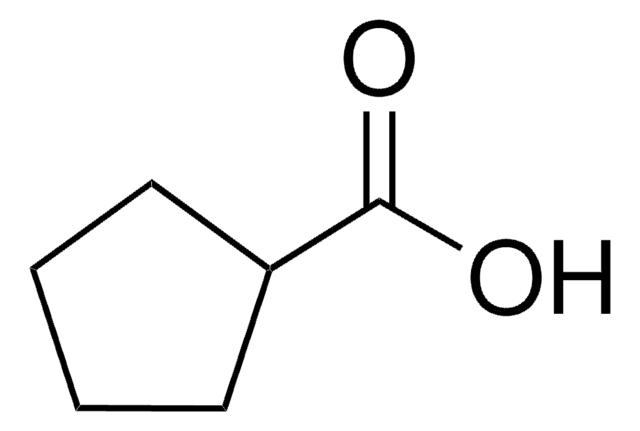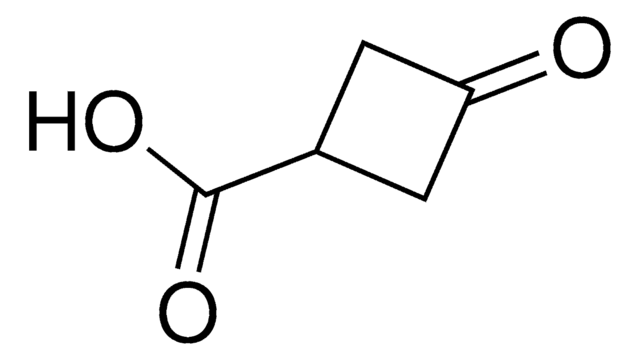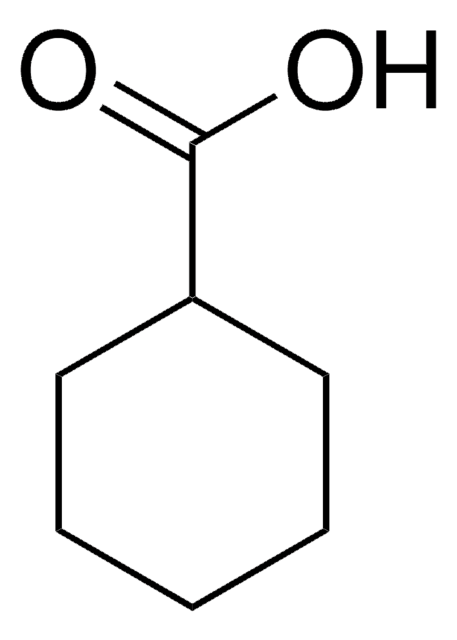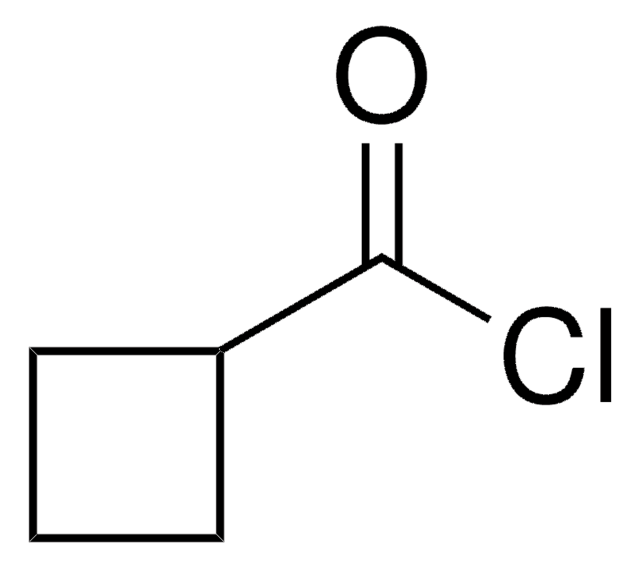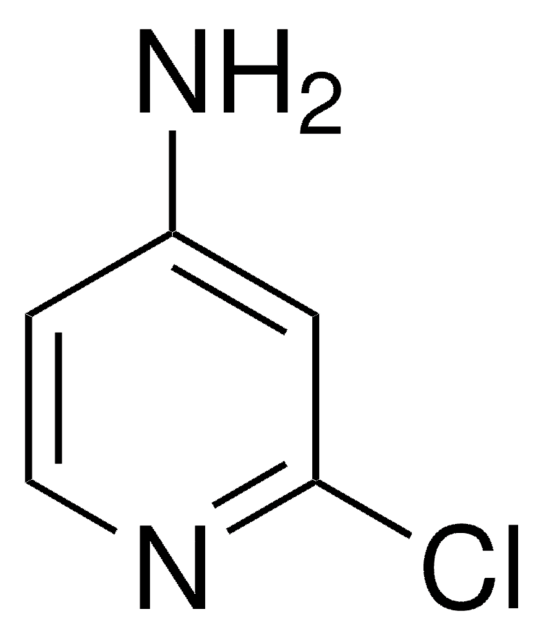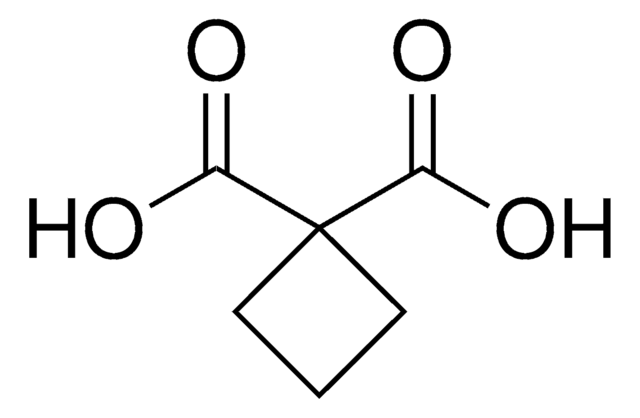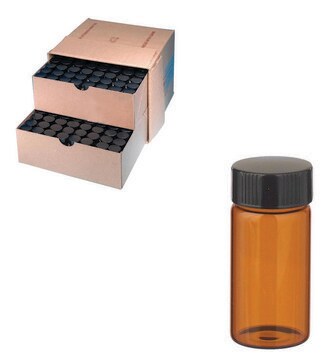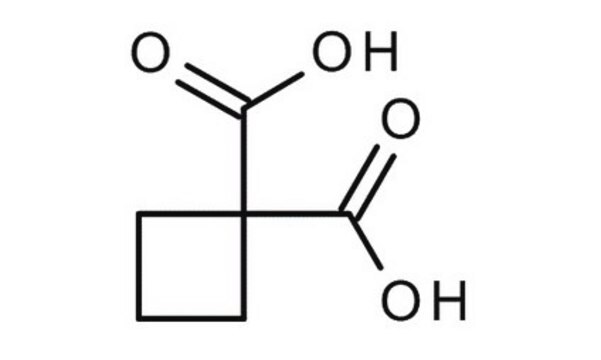All Photos(1)
About This Item
Linear Formula:
C4H7CO2H
CAS Number:
Molecular Weight:
100.12
Beilstein/REAXYS Number:
1816777
EC Number:
MDL number:
UNSPSC Code:
12352100
PubChem Substance ID:
NACRES:
NA.22
Recommended Products
assay
98%
form
liquid
refractive index
n20/D 1.444 (lit.)
bp
195 °C (lit.)
mp
−7.5 °C (lit.)
density
1.047 g/mL at 25 °C (lit.)
SMILES string
OC(=O)C1CCC1
InChI
1S/C5H8O2/c6-5(7)4-2-1-3-4/h4H,1-3H2,(H,6,7)
InChI key
TXWOGHSRPAYOML-UHFFFAOYSA-N
Looking for similar products? Visit Product Comparison Guide
signalword
Danger
hcodes
Hazard Classifications
Skin Corr. 1B
Storage Class
8A - Combustible corrosive hazardous materials
wgk_germany
WGK 3
flash_point_f
181.4 °F - closed cup
flash_point_c
83 °C - closed cup
ppe
Faceshields, Gloves, Goggles, type ABEK (EN14387) respirator filter
Choose from one of the most recent versions:
Already Own This Product?
Find documentation for the products that you have recently purchased in the Document Library.
Customers Also Viewed
Brian D Hudson et al.
FASEB journal : official publication of the Federation of American Societies for Experimental Biology, 26(12), 4951-4965 (2012-08-25)
When it is difficult to develop selective ligands within a family of related G-protein-coupled receptors (GPCRs), chemically engineered receptors activated solely by synthetic ligands (RASSLs) are useful alternatives for probing receptor function. In the present work, we explored whether a
Paolo Lorenzon et al.
The Journal of neuroscience : the official journal of the Society for Neuroscience, 35(1), 146-160 (2015-01-09)
The type of neuronal activity required for circuit development is a matter of significant debate. We addressed this issue by analyzing the topographic organization of the olfactory bulb in transgenic mice engineered to have very little afferent spontaneous activity due
Our team of scientists has experience in all areas of research including Life Science, Material Science, Chemical Synthesis, Chromatography, Analytical and many others.
Contact Technical Service